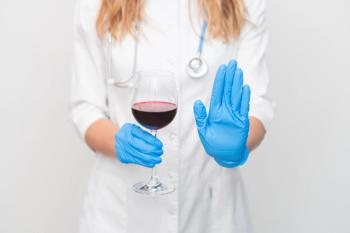
- Psychiatric Times Vol 16 No 4
- Volume 16
- Issue 4
Schuckit Addresses State-of-the-Art Addiction Treatments
Marc Schuckit, M.D., professor of psychiatry at the University of California, San Diego, School of Medicine, examined recent developments in the treatments for alcohol and drug dependence, and examined important changes in DSM-IV's classification of substance use disorder at the 11th Annual U.S. Psychiatric & Mental Health Congress.
Marc Schuckit, M.D., professor of psychiatry at the University of California, San Diego, School of Medicine, examined recent developments in the treatments for alcohol and drug dependence, and examined important changes in DSM-IV's classification of substance use disorder at the 11th Annual U.S. Psychiatric & Mental Health Congress.
Schuckit, who is also director of the Alcohol and Drug Treatment Program at the San Diego Veterans Affairs Medical Center, explained that the DSM-IV defines substance abuse dependence according to the following criteria: 1) tolerance; 2) withdrawal; 3) larger amounts of substance used/longer period of use than intended; 4) inability to or persistent desire to cut down or control use; 5) a great deal of time spent obtaining, using or recovering; 6) important activities given up or reduced; and 7) use despite problems caused or exacerbated by use.
To properly diagnose an alcohol or substance use disorder, Schuckit said the physician should reflect on the following questions: Does the patient have problems in three or more of the criteria listed above? Did these problems cluster together? Did they come together within approximately a year's time? Another means of diagnosis, he noted, is recognizing physical changes, as the bodies of people who have been taking high enough doses of a substance over a long enough period of time develop symptoms that are the opposite of the acute effects of the substance.Detoxification
The key to any detoxification treatment is still a good physical exam, said Schuckit, since the chances are high that detoxification will be more difficult for anyone who is physically debilitated. After a thorough exam, the physician should have the patient follow up with proper rest and nutrition, a methodology known as social model detoxification without medication.
Medications and detoxification programs, Schuckit said, are only appropriate for the depressants (alcohol, benzodiazepines and barbiturates), the stimulants (amphetamines or cocaine in any of their respective forms) and the opioids (heroin, any other prescription pain pills or methadone). "You don't detox people for cannabinols, you don't detox people for hallucinogens," he said.
After detoxification, rehabilitation is crucial, said Schuckit. It increases a patient's functioning while minimizing the chance of relapse, he explained. It helps people with a chronic disorder rebuild their lives without substance use, and helps them stay focused and motivated. Schuckit pointed out that a similar approach to rehabilitation is used when treating any other type of chronic disease, such as diabetes or hypertension. The physician would try to get the patient's motivation high and help them change their lifestyle. "Alcohol and drug dependence are just other examples of chronic disorders," he noted.Alcohol Rehabilitation
According to Schuckit, the majority of physicians who work in the alcohol abuse field agree that the best medications for this disease are the depressants, which are considered the safest and most inexpensive among the three classes of drugs. Among the depressants, the safest and the cheapest are the benzodiazepines, he said. "Either a longer-acting or shorter-acting benzodiazepine can be used; there are complementary assets and liabilities."
There is no reason to carry out alcohol detoxification with anything other than a benzodiazepine, Schuckit stressed. Carbamaze-pine (Tegretol), valproic acid (Depakene) or gabapentin (Neurontin) are no better, they cost more and they are more dangerous than the benzodiazepines.
As far as new medications for alcohol abuse, Schuckit considers acamprosate (Campral) an interesting drug because of its strong effects on glutamate and NMDA receptors, and because it has only a mild effect on gamma receptors. "It is not clear which, if any of those effects, is contributing to the outcome in alcohol dependence." He also advised that acamprosate, although not currently marketed in the United States, will most likely be marketed here within the next year or so.
In 12-month trials, a large number of people were given acamprosate at a dose level between 1,300 mg/day and 2,000 mg/day. All trials except one indicated a slight but statistically significant higher proportional decrease in the amount the research participants drank when on acamprosate. Schuckit noted that acamprosate doesn't negatively interact with alcohol if a patient resumes drinking.
Another medication Schuckit recommends for alcohol withdrawal is naltrexone (ReVia), a pure opioid antagonist. Naltrexone, which has been around since 1984, is also used in opioid treatment. Schuckit said that the selective serotonin reuptake inhibitors (SSRIs) still need more data. He is "not quite so sure they're going to show up very well [in studies]."Project MATCH
Results of Project MATCH (Matching Alcoholism Treatment to Client Heterogeneity) were published in the January 1996 issue of the Journal of Studies in Alcohol (58[1]:7-29). Schuckit noted that Project MATCH investigated an aspect of rehabilitation that most clinicians believe to be true: if the most important characteristics about each patient can be identified, physicians can assign them to the most appropriate treatment option.
By looking at 10 primary matching variables and 16 contrasts of almost 2,000 previously specified alcohol-dependent individuals, investigators formulated a hypothesis of how these characteristics might relate to three different treatment modalities, he said. One emphasis was a 12-step facilitation approach, e.g., Alcoholics Anonymous (AA), in which the patient is responsible for his own actions, has to rebuild his life, get in touch with other people and recognize that he's not in control. The second emphasis was the behavioral or cognitive approach, also known as cognitive behavioral coping skills therapy, in which the patient has to know where his relapse triggers are and how to head them off. The third emphasis was motivational enhancement therapy-a kind of talking, psychological therapy, explained Schuckit.
After one year, with a follow-up that exceeded 90%, Project MATCH found that the proportion of people who were clean and sober a year later was roughly in the 50% to 60% range. "And that is quite good," said Schuckit. "In fact, all the programs did very well. So the good news was that [it demonstrated] there was no essential level of matching that was required."Stimulant Rehabilitation
"Stimulant withdrawal is just awful, because you feel depressed, you can't concentrate, and you eat and sleep too much. But, when it gets right down to it, there are basically no medications that are helpful," Schuckit said. So what's the state of the art regarding stimulant withdrawal? he asked.
In recent years, there have been studies regarding medications for stimulant abuse that made great sense, Schuckit commented, but what makes great sense isn't always good or correct. "In stimulant intoxication, people are mixing up their dopamine receptors like mad. So [a physician might ask] why not give a patient a dopamine receptor agonist during withdrawal like Ritalin [Methylphenidate], or drugs that affect the autonomic nervous system such as clonidine [Catapres]?" Because, he answered, there just aren't enough convincing data regarding them yet.Opioid Rehabilitation
"There's nothing much new regarding opioid rehab," said Schuckit. "Methadone is still the state of the art [in treatment]." However, Schuckit explained, most states lock physicians' hands regarding opioid withdrawal because of the special license needed. "So if people come in who are physically dependent on heroin and they're already on methadone, physicians have it made."
Ultimately the optimal treatment for opioid withdrawal is an opioid, said Schuckit, "but it's illegal to prescribe an opioid for opioid withdrawal in California and in most other states." Thus, Schuckit recommends treating the symptoms with symptomatic medication, such as a decongestant for a runny nose, Imodium (loperamide) for diarrhea, or clonidine for nervousness and autonomic dysfunctions, such as skin crawling-type sensations.
Naltrexone has been used for many years for opioid withdrawal but, according to Schuckit, 90% of patients on the street who come in for opioid dependence treatment and are put on naltrexone stop taking it within a month or so. "They just don't like it," he said. "The opioid blockers aren't doing anything for longer-term mild withdrawal symptoms. [In fact,] they may even be making it worse. So I don't find them very useful for the average patient. However, send me someone who is highly motivated to stay off opioids, and naltrexone would be something I would recommend."
As there is a 20% to 30% spontaneous remission rate for all drug dependence, including opioids, it is difficult to properly evaluate the efficacy of treatments, said Schuckit. "Take 100 people, alcohol or drug dependent, turn them loose and follow up 10 years later, about 20% to 30% of them will be clean and sober without treatment. This is also without AA or NA [Narcotics Anonymous], and they will be clean for years," he said. "So with dependency, there's a lot of fluctuation."DSM Criteria Progress
Careful reading of DSM-III-R and DSM-IV, said Schuckit, is likely to reveal that the approach to substance-induced disorders has not changed remarkably. However, DSM-IV is much more explicit about how to apply these criteria in clinical situations. In addition, the revision of the structure of DSM-IV facilitated the incorporation of warnings regarding the need to be certain that the clinical syndromes of anxiety, confusion, depression and so on are not substance-induced.
"There has been progress in substance abuse criteria," said Schuckit. "DSM-IV split off abuse [and dependence] into [separate] criteria that...can now be studied." In addition, Schuckit noted, DSM-IV took a major step in acknowledging the potential importance of dependence in tolerance or withdrawal.
"DSM-IV simplified the approach to criteria for substance use disorders by basically incorporating the diagnostic criteria for dependence already existing in DSM-III-R," said Schuckit. "As a result, the criteria for dependence are now similar in both the International Classification and the DSM systems. However, since the criteria for abuse in DSM-III-R and harmful use in the International Classification DSM approach were found to be unreliable in a field, new, reliable criteria for abuse are presented in DSM-IV," he noted. "Future research will be required in order to establish the predictive validity of these diagnostic items."
Articles in this issue
over 26 years ago
Rough Airover 26 years ago
Practical Questions Beginning Psychotherapyover 26 years ago
Living Stories: Spiritual Awakenings in Recoveryover 26 years ago
Commentary Alcoholism and Free Willover 26 years ago
Behavioral Couples Therapy for Alcoholism and Drug Abuseover 26 years ago
Psychotherapy Perspectives in Medication ManagementNewsletter
Receive trusted psychiatric news, expert analysis, and clinical insights — subscribe today to support your practice and your patients.














